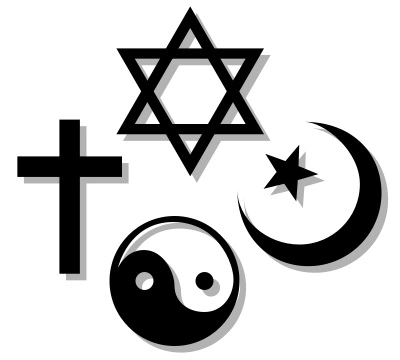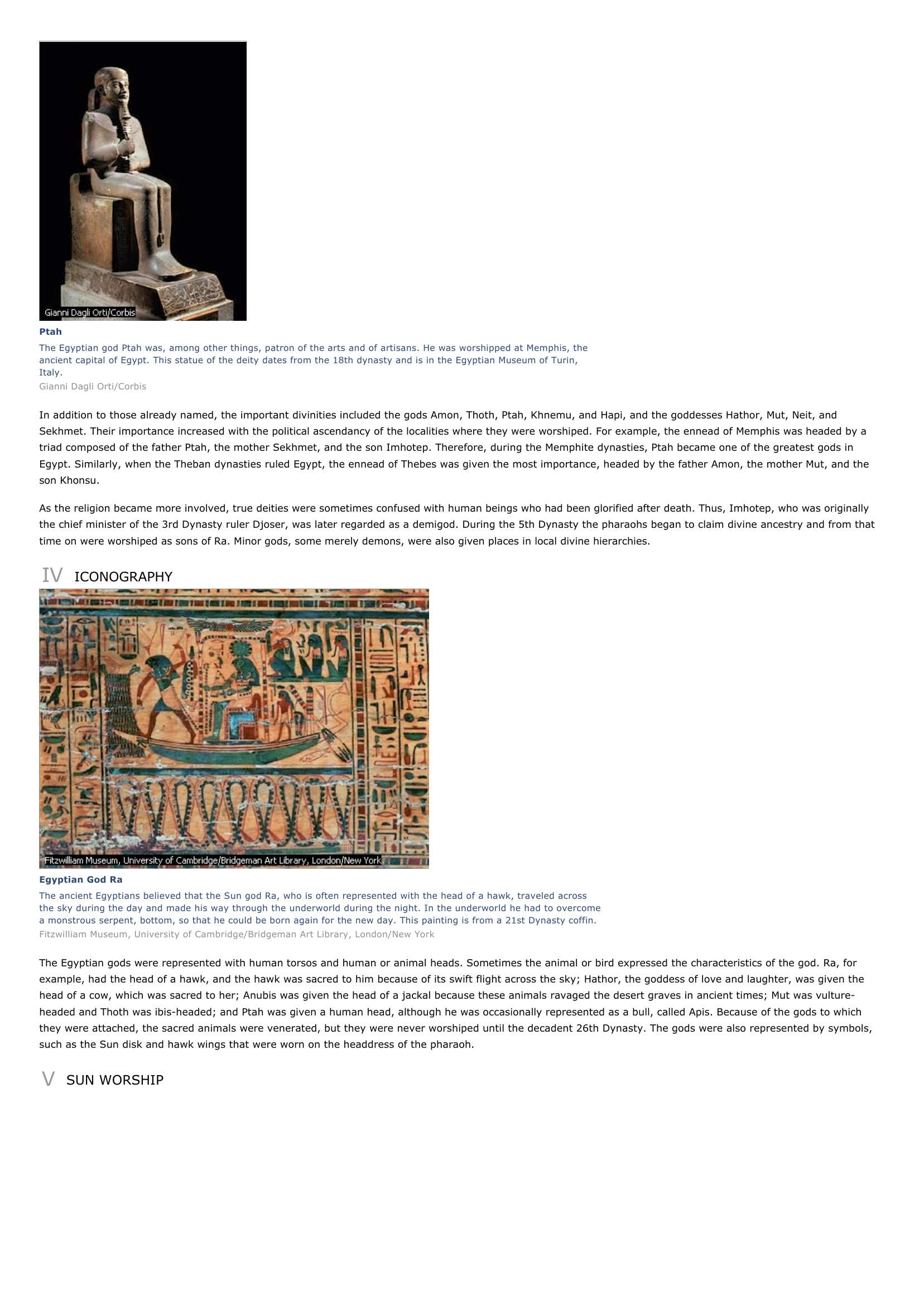Egyptian Mythology I INTRODUCTION Egyptian Mythology, specifically, the religion of ancient Egypt.
Publié le 12/05/2013

Extrait du document


«
PtahThe Egyptian god Ptah was, among other things, patron of the arts and of artisans.
He was worshipped at Memphis, theancient capital of Egypt.
This statue of the deity dates from the 18th dynasty and is in the Egyptian Museum of Turin,Italy.Gianni Dagli Orti/Corbis
In addition to those already named, the important divinities included the gods Amon, Thoth, Ptah, Khnemu, and Hapi, and the goddesses Hathor, Mut, Neit, andSekhmet.
Their importance increased with the political ascendancy of the localities where they were worshiped.
For example, the ennead of Memphis was headed by atriad composed of the father Ptah, the mother Sekhmet, and the son Imhotep.
Therefore, during the Memphite dynasties, Ptah became one of the greatest gods inEgypt.
Similarly, when the Theban dynasties ruled Egypt, the ennead of Thebes was given the most importance, headed by the father Amon, the mother Mut, and theson Khonsu.
As the religion became more involved, true deities were sometimes confused with human beings who had been glorified after death.
Thus, Imhotep, who was originallythe chief minister of the 3rd Dynasty ruler Djoser, was later regarded as a demigod.
During the 5th Dynasty the pharaohs began to claim divine ancestry and from thattime on were worshiped as sons of Ra.
Minor gods, some merely demons, were also given places in local divine hierarchies.
IV ICONOGRAPHY
Egyptian God RaThe ancient Egyptians believed that the Sun god Ra, who is often represented with the head of a hawk, traveled acrossthe sky during the day and made his way through the underworld during the night.
In the underworld he had to overcomea monstrous serpent, bottom, so that he could be born again for the new day.
This painting is from a 21st Dynasty coffin.Fitzwilliam Museum, University of Cambridge/Bridgeman Art Library, London/New York
The Egyptian gods were represented with human torsos and human or animal heads.
Sometimes the animal or bird expressed the characteristics of the god.
Ra, forexample, had the head of a hawk, and the hawk was sacred to him because of its swift flight across the sky; Hathor, the goddess of love and laughter, was given thehead of a cow, which was sacred to her; Anubis was given the head of a jackal because these animals ravaged the desert graves in ancient times; Mut was vulture-headed and Thoth was ibis-headed; and Ptah was given a human head, although he was occasionally represented as a bull, called Apis.
Because of the gods to whichthey were attached, the sacred animals were venerated, but they were never worshiped until the decadent 26th Dynasty.
The gods were also represented by symbols,such as the Sun disk and hawk wings that were worn on the headdress of the pharaoh.
V SUN WORSHIP.
»
↓↓↓ APERÇU DU DOCUMENT ↓↓↓
Liens utiles
- Roman Mythology I INTRODUCTION Roman Mythology, the religious beliefs and practices of the people of ancient Rome.
- Arab Music I INTRODUCTION Umm Kulthum Egyptian singer Umm Kulthum was revered throughout Egypt, North Africa, and the Near East for her powerful voice and improvisational skill.
- Nereids Greek The Nymphs of the sea, specifically the Mediterranean Sea; the daughters of Nereus, an ancient sea god, and Doris, a daughter of Oceanus.
- Homer I INTRODUCTION Homer According to tradition, the Greek poet Homer is believed to be the author of the Iliad and the Odyssey, two great epics of ancient Greek literature.
- Hercules (mythology) I INTRODUCTION Pollaiuolo's Hercules et Antaeus In a wrestling match, Hercules triumphed over the mighty giant Antaeus, who received his strength from his mother, the Earth goddess Gaia.


















